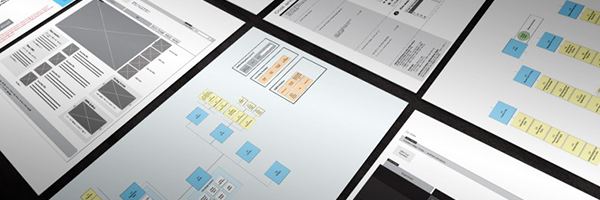The UX Portfolio: Telling Your Story
This originally published over at UXMas, where they were kind enough to let me guest blog (how festive!). They also did a wonderful job of editing the content.
Here’s the post:
User experience designers are storytellers.
The stories that you tell in client meetings and job interviews are about the applications you design. The best stories are thoughtful, compelling and successful. Each story that you tell builds upon your library of experience—it shows the arc of your career and why you should be hired.
However, how you tell your story is as important as the story itself.
How do you tell your story? If you’re uncertain, here are a few ideas that may help.
Tell One or Two Big Stories
There should be at least one or two projects that you can tell a user experience story about, from inception to release. This means showing off some actual project deliverables—for instance:
- The user research you performed
- The actors and personas you developed
- The user stories you wrote
It also means talking about the project. For example:
- The process you followed to come up with user goals
- The assumptions you made, and how you validated them
- Your design considerations
Explaining the full lifecycle illustrates how you think, and gives your audience a more complete picture. Lynn Teo, CXO at McCann Erickson, covers this process extremely well in her presentation, Portfolios Matter: Building the Portfolio to Win the Job.
Once you’ve set the scene, it’s time to play your trump card: demonstrate the only deliverable that truly matters—the final product.
When talking about my portfolio, I frequently talk about Jobvite because we were able to achieve the full lifecycle on that project. However I also talk about a small business called Bob The Chiropractor, because it’s big story about a small business. It’s a project that demonstrates how, even with limited resources, you can achieve great things.
No project is too small to illustrate the big idea.
Tell A Bunch Of Small Stories
Not every UX Designer gets to experience the complete user experience lifecycle on every project, so it may be necessary to show how you took an existing product, made some changes, and improved the product as a result.
Small stories are very important because they show how you can think on your feet and draw on your past experience to make informed design decisions. They also demonstrate to organizations that you’re able to fit into a larger team.
When telling a small story, it’s even more important to include the final product. Your stories should always be results-driven. Whether they’re stories about big or small projects, you need to show the positive effect that your work had for your story to make an impact.
Tell Stories That Fit Your Audience
Every time you tell a story, there are embellishments and changes that you naturally make fit your audience. For example, you don’t use the same language with your mother that you do with your friends.
The same goes with your user experience stories.
Tell your story differently, depending on whom you’re talking to—whether it’s another designer, a product manager, or even the CEO. Each of these individuals needs to hear how your story fits within their context, so you should change the message accordingly.
Telling your story also depends on the organizational context: the stories you talk about for an e-commerce project will be different than for a content-driven intranet, so you may have to research your audience to ensure you’re telling the right stories.
Tell Stories That Sell
You should practice your stories, and be able to elaborate on them when questions come up. It’s not enough to tell your story using an electronic portfolio—you should be able to walk up to a whiteboard and explain the story visually, so that your future employer or client understands fully.
Walking someone through the deliverables you produced on projects big and small is a great well to sell yourself. I love seeing photos of people working together, organizing information with a bunch of post-it notes, because it shows a thought process that is more than shiny wireframes.
Weaving together great stories is a matter of pacing and keeping the audienceengaged. Remember, you should be telling your best stories—a project that ends without any lessons learned isn’t very engaging. Always aim for quality overquantity.
Tell Stories That Have A Great Ending
The best way to illustrate your value as a user experience designer is to not talk about the great wireframes you built for a project, but how your work translated into a measurable return on investment for your company or your client.
When a project is coming to a close, make a point of capturing facts that you can use to sell yourself in the future. For example,
Our user research and changes to the application increased engagement 10-fold.
Conversion increased 400 per cent over one month through A/B testing.
Most design is very subjective, but results that were achieved due to the work you performed is not.
Tell Your Story
Creating a kick-ass UX portfolio is all about defining who you are. Why are you good at user experience? How can you communicate your experiences in a compelling fashion?
What’s your story?
$99 Tough Love Resume and Portfolio Review
Tough love. Great Advice. Receive an one hour portfolio review and career coaching session online, or in person if you're in Seattle.

